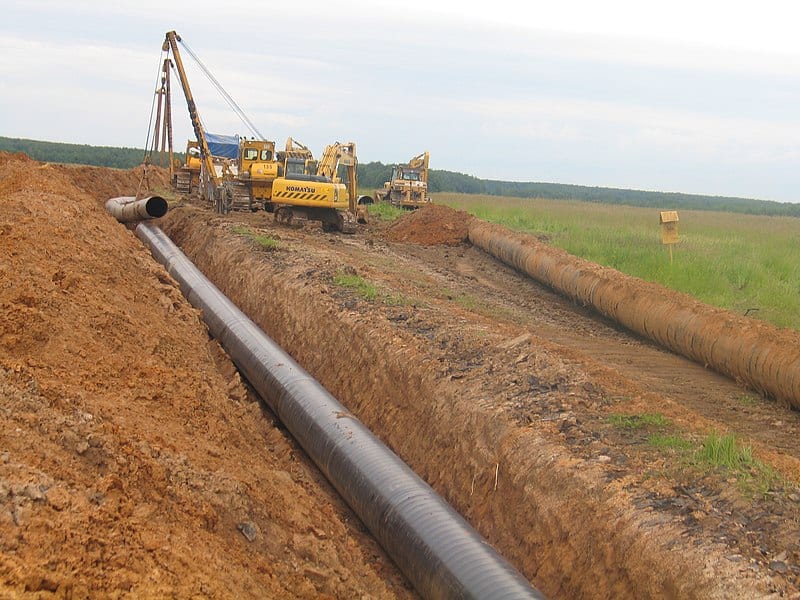The cart is empty!
Using Cathodic Protection to Counteract the Corrosive Reaction
How We Prevent Corrosion Using Cathodic Protection
In our previous article, we discussed the basics of cathodic protection (CP) and the fundamentals of the corrosive reaction. In this second installment, we will delve deeper into the types and mechanisms of CP, specifically focusing on the principles of CP, and the application of galvanic (sacrificial) anodes, and impressed current systems.
(Note: We’re focusing on steel and iron, though the principles are the same whatever the metal.)
The Principles of Cathodic Protection
Cathodic protection works by counteracting or reversing the corrosion current that flows off the corroding anode sites into the electrolyte. By providing an excess of electrons, CP forces the corrosion reaction to be suppressed. This protective current flows from a CP anode, which is buried or immersed in the same electrolyte as the steel or iron, onto the metal surface being protected.
The CP current can be supplied in two ways:
1. Galvanic (Sacrificial) Anodes
An external anode made from a more active metal (one that corrodes more readily than iron or steel) is connected to the metal surface to be protected. The anode’s own corrosion generates the CP current, making the protected metal the cathode.
2. Impressed Current Systems
An external, direct current (DC) power source is connected to the steel, along with an inert anode in the electrolyte. The current flows from the anode, onto the steel, turning it into a cathode.
Galvanic (Sacrificial) Anodes
Galvanic anodes are metal castings physically connected to the metal to be protected,. The anode material is chosen based on its more negative electrical potential compared to steel, as defined by their positions in the galvanic series.
The difference in potential between the sacrificial anode and the steel causes electrons to flow from the anode to the steel, making the steel surface more negatively charged and, thus, the cathode of the corrosion cell. The anode material corrodes or sacrifices itself to protect the steel.
Common materials used for galvanic anodes include alloys of aluminum, zinc, and magnesium. These anodes are widely used in the protection of ballast and cargo/ballast tanks of ships, external hulls of smaller vessels, offshore oil and gas facilities, internal and external flood defense gates, and smaller buried tanks and pipelines.
In paint technology, zinc-rich primers act similarly to galvanic anodes. The zinc particles in the primer corrode preferentially to the steel substrate, providing protection. Galvanised steel also employs this principle, where the zinc coating corrodes to protect exposed steel areas if the coating is damaged.
Impressed Current Systems
For larger structures, the current demand might be too high for galvanic anodes alone, making them uneconomical. In such cases, impressed current systems are used, where an external DC power source is used to force electrons onto the steel surface.
Impressed current anodes are typically made from materials such as mixed metal oxide-coated titanium (MMO/Ti), platinum-coated titanium (Pt/Ti), niobium (Pt/Nb), or cast iron/silicon/chrome alloys (SiFe anodes).
In Summary
Both galvanic and impressed current CP systems operate on the principle of providing an excess of electrons to the metal surface, making it the cathode, and preventing corrosion. Key points to remember are:
- CP can minimise corrosion damage to uncoated structures and to coated structures if the coating becomes damaged.
- CP applied to external surfaces will not reduce corrosion on internal surfaces.
- CP is ineffective above mid-tide level and does not affect atmospherically exposed steel.
- The choice between galvanic and impressed current CP systems depends on the specific requirements and scale of the structure being protected.
In conjunction with industry experts, we have developed a comprehensive set of training and certification programs for all in the corrosion industry. These include our leading Cathodic Protection, Training, Assessment and Certification Scheme and Coating and Inspection Training. For details of these courses, please contact ICorr today.
In the last of this mini-series of articles covering cathodic protection and the corrosive reaction, we look at designing, monitoring, and integrating cathodic protection with coatings.


